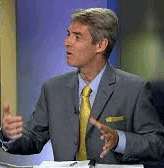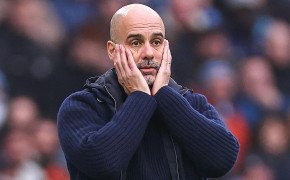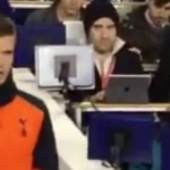There are always plenty of promising youngsters working their way through the production line of South American club football – an example of the species was showcased in this very space last week. But in terms of experienced, consolidated professionals, there are not too many candidates who can challenge Peruvian centre-forward Paolo Guerrero.
Now with Flamengo of Rio, Guerrero came back to South America to join Sao Paulo giants Corinthians in 2012. This was a real coup for the Brazilian game. Guerrero was not a veteran looking for a tropical adventure to wind down his career. At the time he was 28, at the peak of his powers and with plenty of good years still ahead of him.
His signing was a reflection of two realities, both of which proved temporary. One, backed by the economic boom, was the financial strength of Brazil’s big clubs, and Corinthians in particular. The other was the player’s dismal injury record. He had spent a decade in Germany, split between Bayern Munich and Hamburg, and although there had been plenty of good times, especially with the latter, there were also lots of occasions when his body broke down under the strain.
There soon came even better times with Corinthians. As South American champions they went to Japan to contest the 2012 Club World Cup. The title is taken with almost life or death seriousness in South America, and an army of Corinthians fans saved up, sold things and accumulated enough money to follow their team to the Far East.
Guerrero made it all worthwhile. The team, coached by current Brazil boss Tite, were solid and compact, and their centre-forward gave them a cutting edge. They beat Al Ahly of Egypt by a single goal, and then repeated the same scoreline in the final against Chelsea. Both times the goal was scored by Guerrero – both times it was the only effort on target they managed in the 90 minutes. Guerrero, then, had made all the difference.
In 2015 he moved to Flamengo, since when he has been giving a weekly masterclass in the centre-forward’s art. Guerrero is tall, strong and still quick enough to be launched behind the opposing defensive line. He is also sufficiently imposing and skilled to hold the ball up with his back to goal and bring others into the game.
This week comes the biggest moment so far of his spell with the Rio giants. The second leg of the final of the Brazilian Cup will be played on Wednesday. Earlier this month Flamengo drew 1-1 with Cruzeiro in the Maracana stadium. Now they make the short journey to Belo Horizonte for the return game in the Mineirao. Guerrero missed the first leg through suspension. He will be expected to step back in for the rematch and tip the balance once again.
But he could be forgiven – though probably not by Flamengo fans – if his mind is already wandering to the game just over a week later – the clash he will almost certainly see as the biggest match of his career so far.
On October 5 Peru travel to Buenos Aires to take on Argentina, in a game where avoiding defeat will make the Peruvians favourites to return to the World Cup for the first time since 1982 – 18 months before Guerrero was born.
This is his fourth World Cup qualification campaign – and at the age of 33, it is probably his last. He has never come close to making it to the game’s greatest stage. With 32 goals he is Peru’s all-time top scorer. But those goals have counted for little. He was top scorer at the 2011 Copa America and joint-top scorer four years later. Both times Peru were knocked out in the semi-finals and came third. This time, though, he really has a chance to make his mark.
The shaky Argentine defensive unit would be justified in fearing the Peruvian No.9. If Federico Fazio is once more selected in the middle of the Argentina back three, then Guerrero can beat him for pace, give as good as he gets in a physical battle and hold his own in the air. And with Peru having some key attacking players suspended – playmaker Cristian Cueva and right winger Andre Carrillo – all the more responsibility will fall on the centre-forward.
Flamengo wisely left Guerrero out of their team for Saturday’s league game against Avai. Colombian coach Reinaldo Rueda took Ecuador to the last World Cup and Honduras to the one before that. He is well aware of what this moment means to Guerrero. If he wants his centre forward to be at his best for Wednesday’s domestic cup decider, he has to understand that Guerrero will also want to make sure he has enough gas in the tank to terrify the Argentines.















